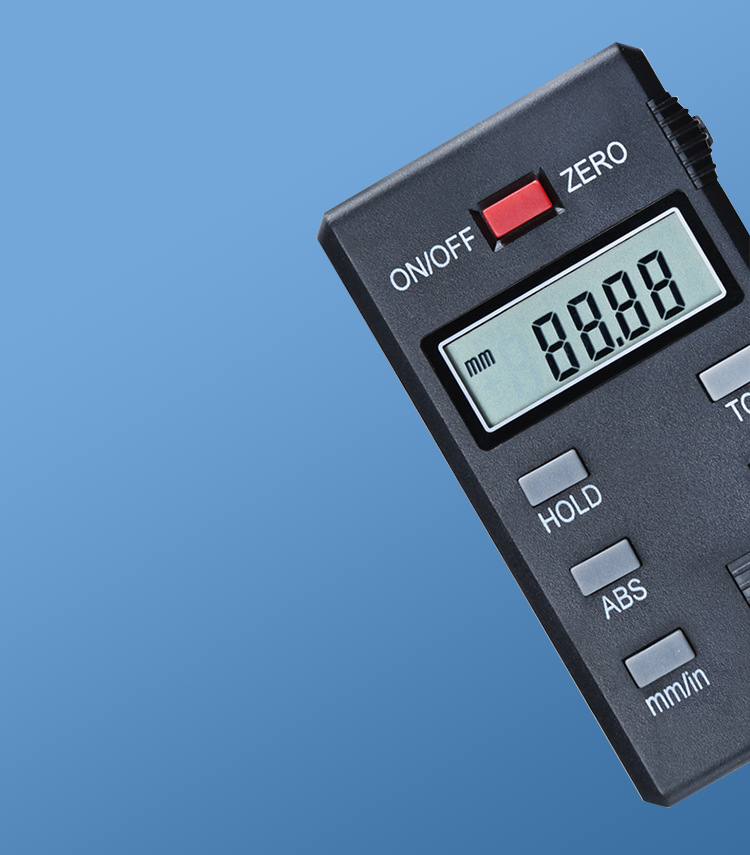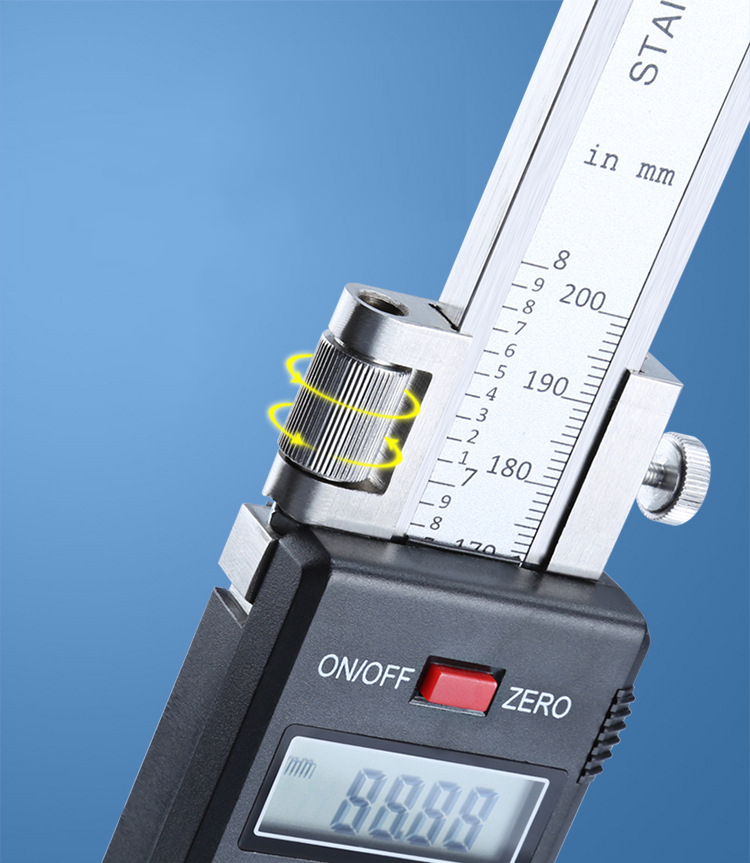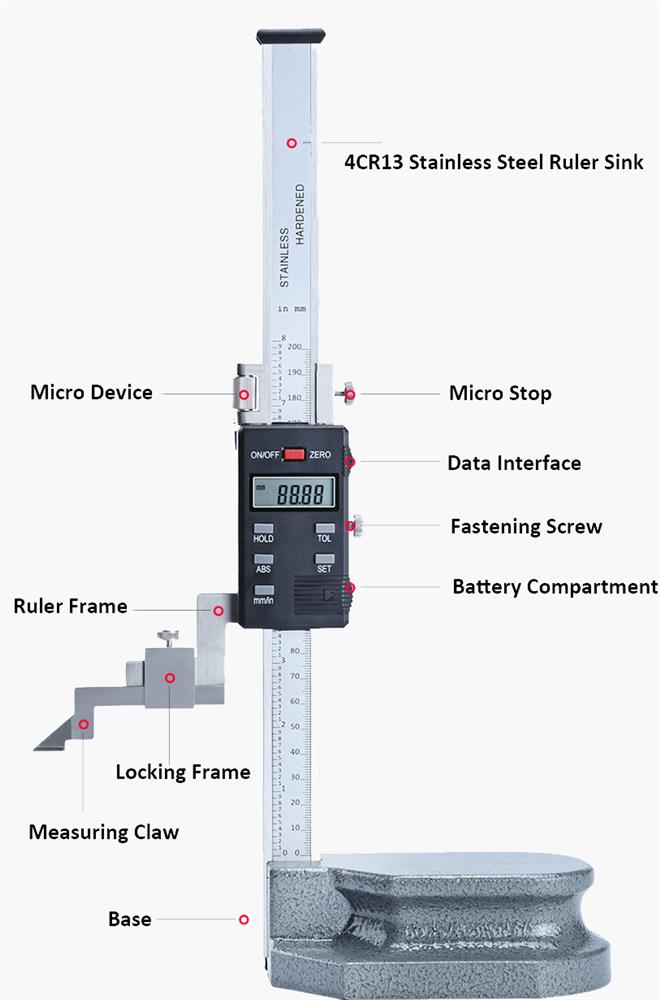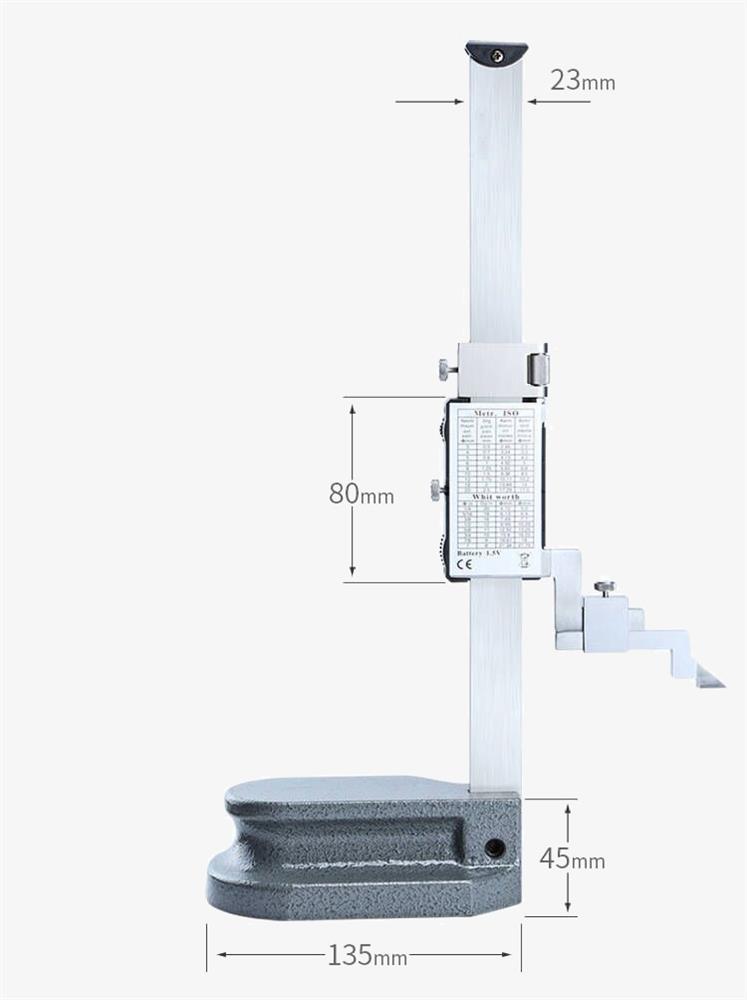High-quality digital vernier height gauge for sale online. 300mm height gauge is an instrument commonly used in industry to measure height. The akes with a reset button for zeroing for relative measuring, which can be used to set the height of saw blades in woodwork.

Large screen digital display design
- LCD high-definition LCD screen, the numbers are clear and easy to read
- Comfortable in hand and full of functions

Precise fine-tuning device
- Toggle mechanism for more precise values
- High-definition scale film, dual display in metric and imperial
Detail

Applications
SISCO digital height gauges are also called height gauges. As the name suggests, its main purpose is to measure the height of workpieces, and it is also often used to measure shape and position tolerances, and sometimes to mark lines. Digital height gauges are mainly used in the automotive industry, manufacturing, science, and research industries.

- Model: SISCO-DHG-300
- Range: 0-300mm
- Voltage: 1.5V
- Resolution: 0.01mm
- Error: ±0.04mm
- Responding Speed: 1 m/s
- Body Material: 4CR13 stainless steel
- Battery Type: LR44 button-type
- Weight: 26kg
Dimension

Q1: What is a digital height gauge?
A1: A height gauge is one of the most used accuracy and precision tools in different industries. Some of these industries are manufacturing, automobile, metalworking, and healthcare. Typically, they’re used in production stages, such as in cutting and marking raw materials. In some cases, height gauges are utilized in quality control to check if products have met particular standards.
Q2: Is the digital height gauge accurate?
A2: Standard height gauges provide readings accurate to one-hundredth of an inch, but precision-engineered digital height gauges can determine accurate measurements up to the thousandth of an inch and beyond.
Q3: Why do we use digital height gauges?
A3: A digital height gauge is used for measuring the height of objects. Vernier height gauges are used in metrology and metalworking to detect or measure vertical distances. The height gauges are often used to measure a granite surface or scribe part features from a datum plane.
Tips: What's in a digital height gauge?
High-quality, hardened stainless steel is what makes the body of a digital height gauge. To ensure the instrument’s rigidity and stability, a digital height gauge comprises a solid cast iron base. It also has a beam that extends from the base up and includes a printed scale in metric and imperial format. Themetric scale usually ranges from zero to 300 millimeters, while the imperial scales range from zero to 12 inches. In some digital height gauges, metric and digital scales can even measure up to 2000 mm or 80 in.
The beam also has an electronic measuring slider, which comes with the Power ON/OFF, HOLD, TOL, SET, MM/INCH, ON/OFF/ZERO, and ABS buttons.
On one of the jaws, the slider also comes with a carbide scriber tip. Along the scale, the attached scriber, together with the slider, can slide up and down and be locked in place.
Thank you for buying industrial test and measurement equipment on SISCO.com, all products sold by SISCO and the partner cover a 12 months warranty, effective from the date of receiving the products.
What is covered?
SISCO is responsible for providing free spare parts, and free technical support to assist the customer to repair the defective products until the problem is solved.
What is not covered?
- Product purchased from anyone other than a SISCO store or a SISCO authorized reseller.
- Expendable parts.
- Routine cleaning or normal cosmetic and mechanical wear.
- Damage from misuse, abuse or neglect.
- Damage from use of parts other than SISCO approved.
- Damage from use outside the product’s usage or storage parameters.
- Damage from use of parts not sold by SISCO.
- Damage from modification or incorporation into other products.
- Damage from repair or replacement of warranted parts by a service provider other than a SISCO authorized service provider.
- Damage caused by the application environment not meeting the product usage requirements and the failure to perform preventive maintenance.

